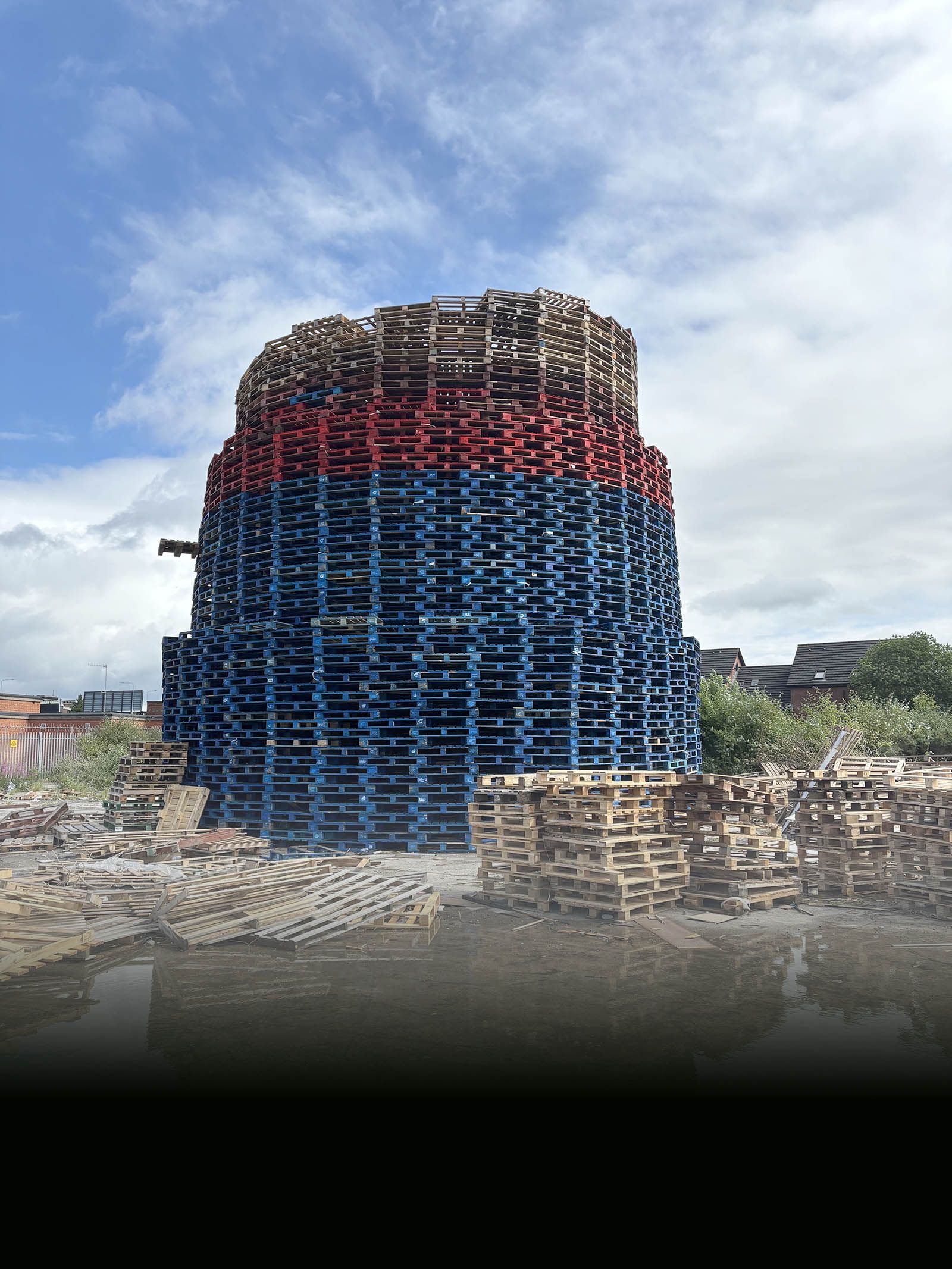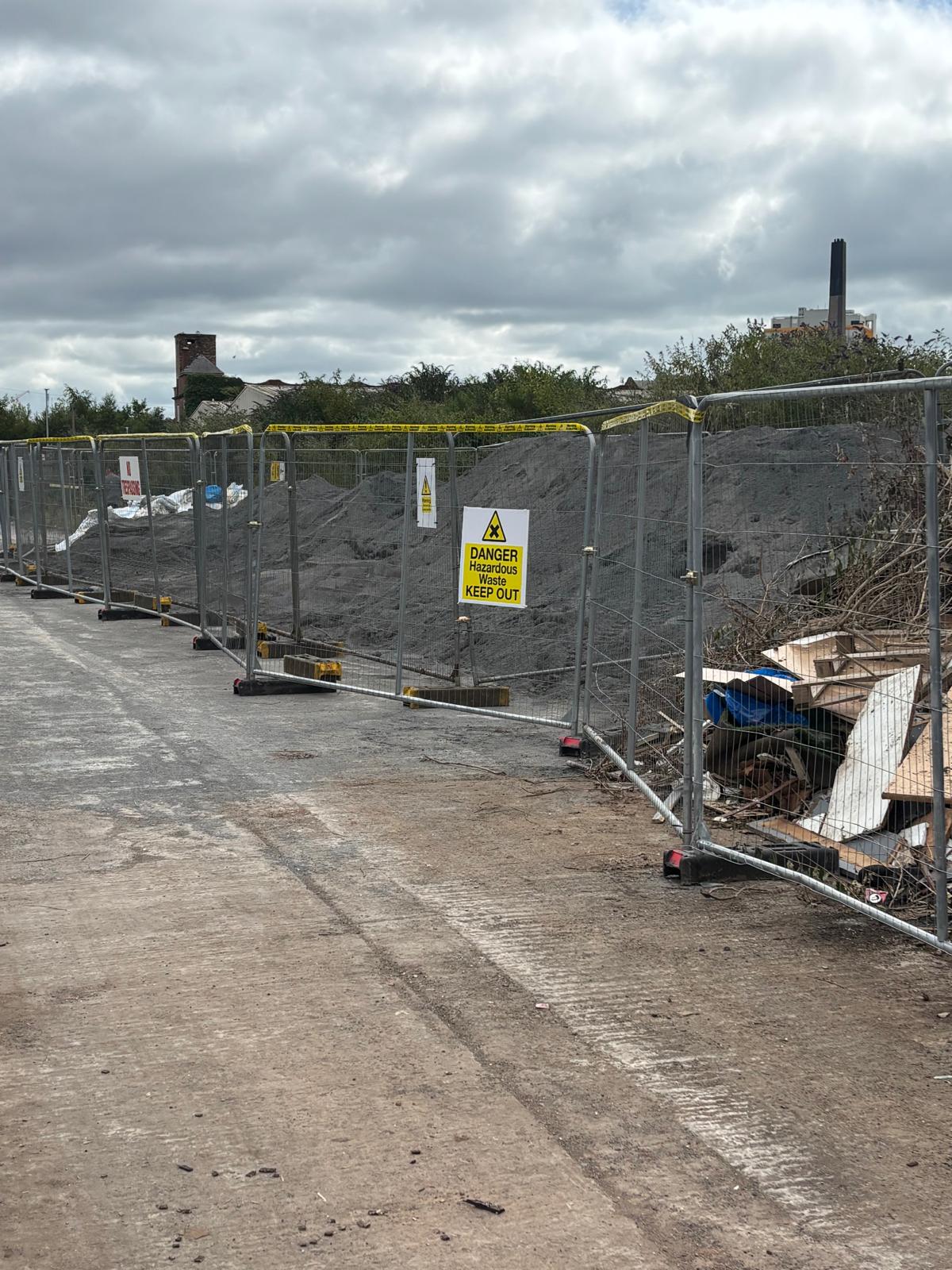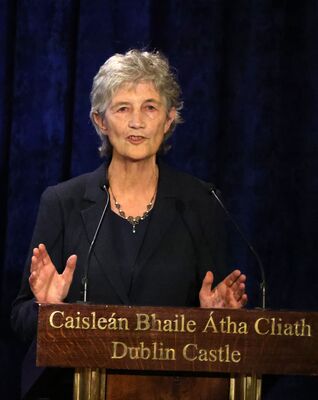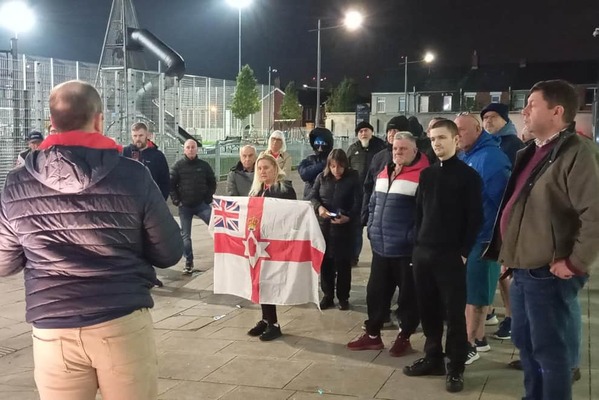I WENT back on the radio on Monday, and let me tell you it’s been a while.
In case you’re thinking ‘a while’ means a few months, a couple of years, even, or that sepia-toned era we now call pre-Covid, I’m talking decades.
I’m talking looking at Barry Cowan through a haze of cigarette smoke; I’m talking David Dunseith’s ‘Wheelie Bin Derby’ days; I’m talking about talking about the DUP’s red berets and swagger sticks. If I remember correctly, my last hurrah was a lengthy one – a morning-long shift with Wendy Austin for Bill Clinton’s visit to Springvale in 1995.
Perhaps unsurprisingly, as I sat in the Talkback studio across from William Crawley I got a bit nostalgic, although the subject wasn’t one that on the face of it lends itself to sweetly melancholic thoughts of the past – we were talking about asbestos. Or, to be more accurate, and to use a description that William and I eventually agreed upon, asbestos and bonfires.
The site in question is off the Donegall Road on the border of West and South Belfast, overlooking the Westlink. A rather large pile of asbestos tiles has been dumped there and because we’ve been reporting on it for some time, on I went to bloviate for Ireland. Or part of it. It brought me back to the place I was born, which happens to be the place where the bonfire is. Not exactly where the bonfire is, because when I was born the site was a textiles factory. Rather it brought me back to a bit up the road and to Roden Street. Roden Street RUC barracks in particular, right slap-bang next to whose forbidding gates I was born at Christmas 1960.
THREAT: The bonfire poses a risk to the power supplies of the RVH and City Hospital
I have a vague fondness for the area, even though it’s been changed beyond recognition by a brutal combination of the Troubles and the Westlink. And I have real concern for kids at the bonfire who, as I write this, are doing what kids around bonfires do: shouting, laughing, climbing, exploring. Except they’re doing it beside a mound of asbestos the size of a swimming pool. Normally the hazards they face are rather more familiar ones – hazards that I faced when I collected wood for a bonfire (which I wasn’t allowed to attend on the Elventh Night), hazards which, as I remember them and in descending order of concern were: falls from height; six-inch nails; skelfs. All of these are fates best avoided, of course, but the presence of asbestos at a cultural celebration© brings bonfire concerns to new and undreamt of heights. Guinness Book of Records heights, perhaps.
As a kid from the area, I got to thinking about kids from the area, who face two distressing contingencies apropos the fire-retardant tiles. The first is the prospect of them penetrating the mighty defences that Stormont and City Hall in all their genius and concern have erected around the pile: a portable mesh fence and and a black plastic sheet held down by scrap wood and sandbags. The second is the prospect of them inhaling asbestos fibres. Because – and get this – asbestos may be a fire-retardant material, but it doesn’t react well to, um, fire. Were the pile to be catch fire (and held down as it is by wood there’s more than a fair chance) the micro-fibres of which the tiles are made up will rise up into the air like a dandelion spores on a summer breeze.
If the fibres are inhaled by children (and I exclude adults from this story not out of callousness but out of the civil law theory of contributory negligence) they will penetrate internally and remain, never to be removed. In ten years, twenty years, perhaps even thirty years the Asbestos Summer will take its distressing toll.
It mightn’t happen, though, let’s keep that in mind. The children might ignore the shiny fence and decide not to have a look at what’s behind it and what’s underneath the plastic sheet. And the Eleventh Night may be so preternaturally still and windless that the black spectral mound in the shadow of the bonfire may be left totally untroubled by embers and sparks. The thing is, though, that it’s the job of a normal society not to cross its fingers and legs and hope for the best, it is the job of a normal society to assume the worst. But for over a hundred years this place has not been normal during bonfire season; or rather, it’s been a hell of lot more not normal than it is for the rest of the year.
The environment people pack it in. The local authority people pack it in. The police people pack it in. Firefighting people pack it in. And they hand the public space over to the mob to do as they please. The environment people and the local authority people go in later and clean up the mess as best they can. But to their credit, the police people and the firefighting people hit the streets on the night to keep the drunks in some kind of order and to hose down houses, businesses and apartment blocks. But their key tasks of advising and preventing are forgotten about between St Patrick’s day and the Twelfth.
Who’s going to stand round the ventilator when in two decades the kid on the asbestos pile is fighting for his life? His mother or father? Perhaps, but not if they were at the bonfire with him. His 2025 elected rep? Good luck to them if they have the nerve to turn up after having uttered not a dickybird to prevent the preventable. Somebody from the NIEA? Somebody from City Hall?
I feel exactly the same about the kids of the Donegall Road, the Village and Roden Street as I do about the children playing in my own street of a summer evening. I want only the best for them. I was a bundle of mischief in a sloppy Joe and and plastic sandals – they’re bundles of mischief in Adidas t-shirts and Nike Airs. But I’m a part of them and they’re a part of me, though a certain seaside soldier claims to be wielding his sword of righteousness on their behalf. Jamie has stated categorically “There is no risk to public health” from the bonfire asbestos. Rather awkwardly, Judge Gordon Kerr believes him to have lied in his recent NAMA trial testimony, although we didn’t need His Honour to tell us that Jamie’s relationship with reality is not a robust one. But at least Bryson is coming out and fighting his corner, even if his corner is at the junction of Wingnut Street and Fruitcake Avenue. His unionist and loyalist colleagues who managed to do what he failed to do and get elected are sayin’ nahim, as we Roden Street folk would put it.
They’ve either taken themselves off to Salou or they’re waiting until the bonfire or the asbestos – or both – are piles of smoking rubble on the Twelfth morning when they’ll emerge with their bowler brushed, their gloves bleached and their swords polished. To march in defence of the freedom invested in them by the Reformation to oppose the Church of Rome and its fatal errors and doctrines and to do nothing while kids contract life-limiting diseases.






